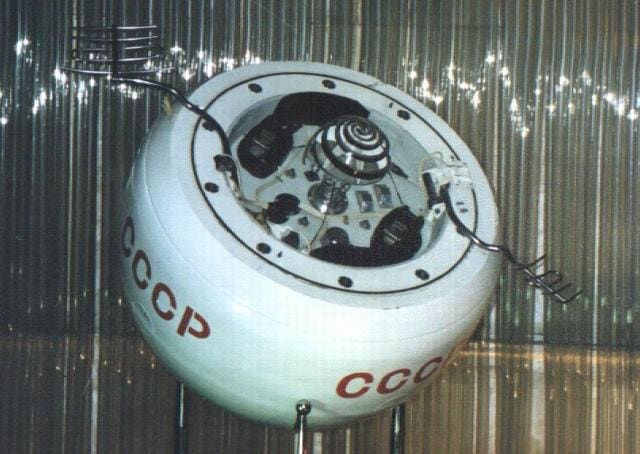Topline
The remains of a Soviet spacecraft launched in 1972 made an uncontrolled descent into the Indian Ocean on May 10, 2025. There are no reports of anyone being harmed. Known as Kosmos 482 and originally designed to parachute down to the surface of Venus, the armored capsule had spent 53 years marooned in an elliptical orbit before its fiery re-entry into Earth’s atmosphere.
Kosmosw 482 was originally designed to parachute down to the surface of Venus.
Key Facts
According to Russian space agency Roscosmos, the stranded spacecraft’s long journey ended harmlessly in the Indian Ocean, west of Jakarta in Indonesia, at 2:24 a.m. EDT on May 10, 2025.
Kosmos 482 weighs around 1,091 lbs (495 kilograms) and struck Earth at speeds close to 150 mph (242 km/h).
The European Space Agency had predicted that Kosmos 482 would re-enter anywhere between 52 degrees north and south of the equator at 1:37 a.m. EDT on May 10, 2025, with an uncertainty of plus or minus 3.28 hours.
Kosmos 482 was part of the USSR’s Venera 8 mission to send two near-identical spacecraft to land on Venus and send back data on the planet’s surface temperature and pressure, according to NASA.
The U.s.s.r.’s Doomed Mission To Venus Finally Ends
The first Venera 8 spacecraft launched on March 27, 1972, on a Soyuz rocket from the Baikonur Cosmodrome in Kazakhstan. It landed on Venus on April 6, 1972. It was one of thirteen probes sent to Venus by the USSR between 1961 and 1984. The second part of the Venera 8 mission launched four days later but failed to leave Earth’s orbit after its Soyuz rocket suffered a malfunction. After being stranded in orbit, it was renamed Kosmos, as was the case with all Soviet missions that failed to leave orbit. Since it was built to withstand extreme temperatures on Venus, it survived re-entry into Earth’s atmosphere.
Space Debris In The Space Age
There have been about 6,910 rocket launches since the start of the space age in 1957, launching 21,620 satellites, about two-thirds of which are still in orbit, according to the Space Debris User Portal. That’s about 14,000 tonnes of space objects in Earth orbit. There are over 35,000 objects large enough to be tracked and cataloged by space surveillance networks currently orbiting Earth, according to the European Space Agency.
Background
There were 263 rocket launches in 2024, more than ever before for the fourth consecutive year. That’s one every 34 hours, on average, according to Space.com.
Further Reading
ForbesNASA Urges Public To Look At Night Sky Now For ‘Nova’ LocationBy Jamie Carter
ForbesSoviet Probe May Strike Earth Next Wednesday — What To KnowBy Jamie Carter
ForbesCongress Urged To Reject Trump’s ‘Destructive’ NASA PlanBy Jamie Carter










